News Blog
Latest News From Our Volunteers in Nepal
VOLUNTEER COMMUNITY CARE CLINICS IN NEPAL
Nepal remains one of the poorest countries in the world and has been plagued with political unrest and military conflict for the past decade. In 2015, a pair of major earthquakes devastated this small and fragile country.
Since 2008, the Acupuncture Relief Project has provided over 300,000 treatments to patients living in rural villages outside of Kathmandu Nepal. Our efforts include the treatment of patients living without access to modern medical care as well as people suffering from extreme poverty, substance abuse and social disfranchisement.
Common conditions include musculoskeletal pain, digestive pain, hypertension, diabetes, stroke rehabilitation, uterine prolapse, asthma, and recovery from tuberculosis treatment, typhoid fever, and surgery.
FEATURED CASE STUDIES
Rheumatoid Arthritis +
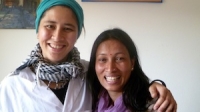
35-year-old female presents with multiple bilateral joint pain beginning 18 months previously and had received a diagnosis of…
Autism Spectrum Disorder +
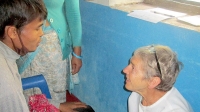
20-year-old male patient presents with decreased mental capacity, which his mother states has been present since birth. He…
Spinal Trauma Sequelae with Osteoarthritis of Right Knee +
60-year-old female presents with spinal trauma sequela consisting of constant mid- to high grade pain and restricted flexion…
Chronic Vomiting +
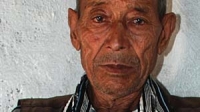
80-year-old male presents with vomiting 20 minutes after each meal for 2 years. At the time of initial…
COMPASSION CONNECT : DOCUMENTARY SERIES
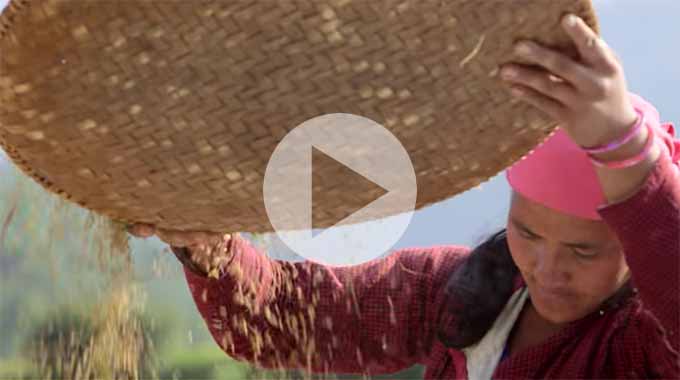
Episode 1
Rural Primary Care
In the aftermath of the 2015 Gorkha Earthquake, this episode explores the challenges of providing basic medical access for people living in rural areas.
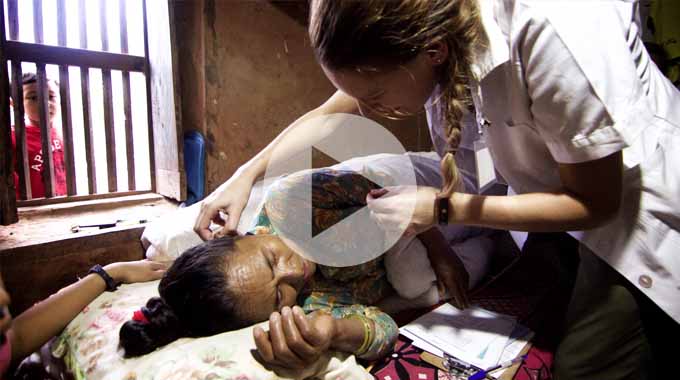
Episode 2
Integrated Medicine
Acupuncture Relief Project tackles complicated medical cases through accurate assessment and the cooperation of both governmental and non-governmental agencies.
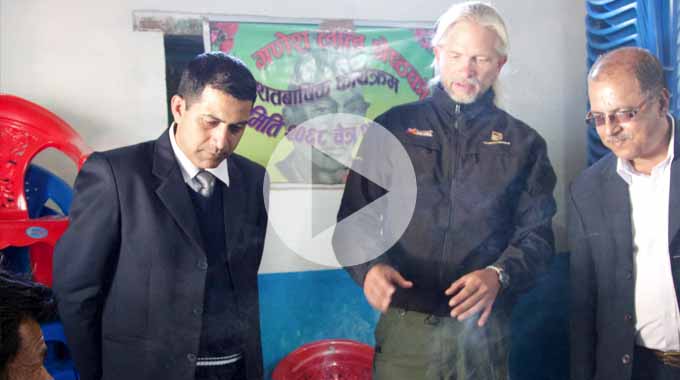
Episode 3
Working With The Government
Cooperation with the local government yields a unique opportunities to establish a new integrated medicine outpost in Bajra Barahi, Makawanpur, Nepal.
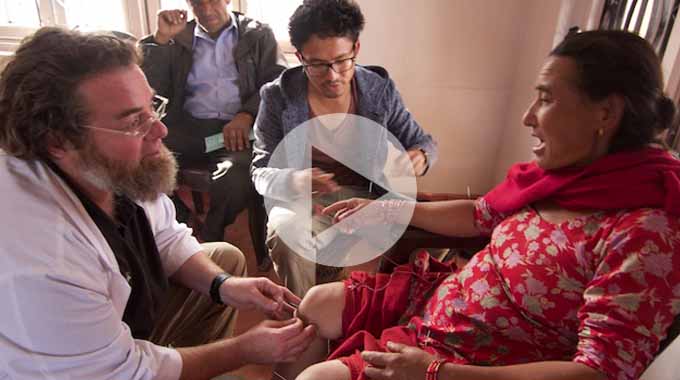
Episode 4
Case Management
Complicated medical cases require extraordinary effort. This episode follows 4-year-old Sushmita in her battle with tuberculosis.
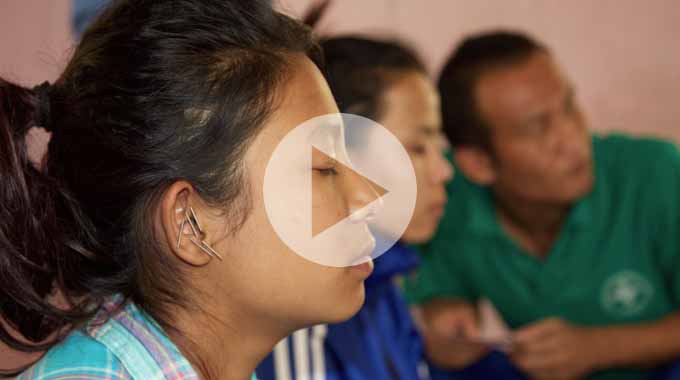
Episode 5
Sober Recovery
Drug and alcohol abuse is a constant issue in both rural and urban areas of Nepal. Local customs and few treatment facilities prove difficult obstacles.
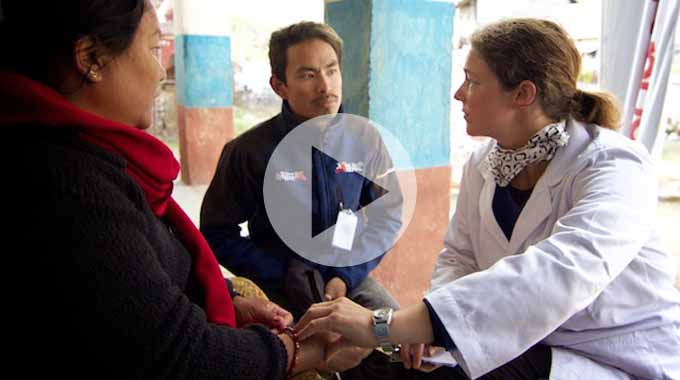
Episode 6
The Interpreters
Interpreters help make a critical connection between patients and practitioners. This episode explores the people that make our medicine possible and what it takes to do the job.
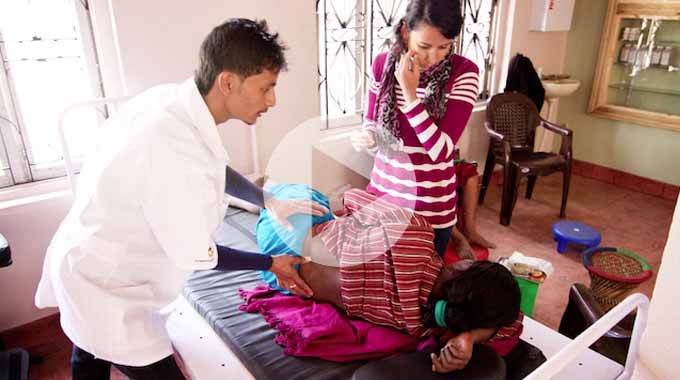
Episode 7
Future Doctors of Nepal
This episode looks at the people and the process of creating a new generation of Nepali rural health providers.
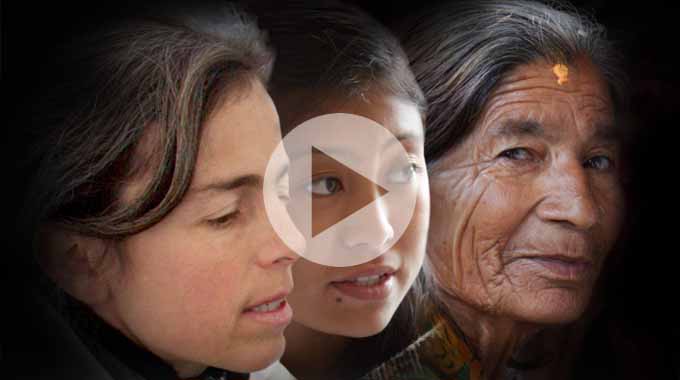
Compassion Connects
2012 Pilot Episode
In this 2011, documentary, Film-maker Tristan Stoch successfully illustrates many of the complexities of providing primary medical care in a third world environment.
From Our Blog
- Details
- By Zoe Nash
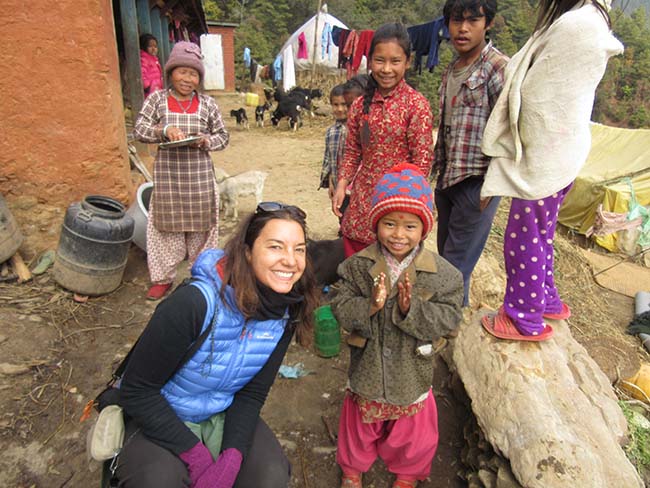
Nepal is a materially poor but culturally rich country. They are the warmest hearted, most generous and toughest people I have met. Truly a humbling experience to be immersed into their culture and their community for this period and to build this relationship with them.
Actually getting to the clinic we have set up in the village is simple, although perhaps not easy, many have to walk, a long way. There has been a fuel crisis in Nepal for the last 5 months, making it extremely challenging for people to be mobile by way of cars, bikes and buses.
The acupuncture relief project is in the village of Bajra Barahi nestled in a valley within the Himalayas, about 36 (long and dusty) km’s south of Kathmandu.
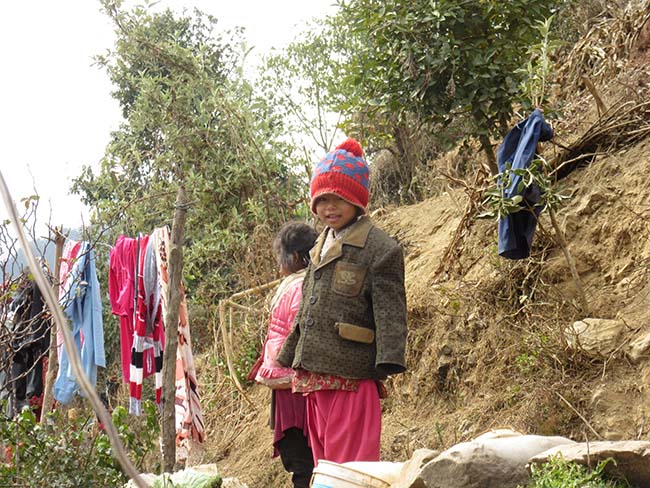
The surrounding villages are scattered around the hills and to reach the clinic. We see patients every day in the clinic that have walked anything from 1-4 hrs to come and see us at the clinic. They have to walk up rough dirt paths, up mountains paths, and across bridges and through the fields, no exaggeration.
I know because I have taken some of these walks during my days off. The walks were a fulfilling experience for a Saturday challenge, dressed up in my hiking gear and ready for adventure, not necessarily something I would want to undertake if I wanted to go and see the doctor about my painful osteo-arthritis on my knees from overwork, or my bad back!
This has really opened my eyes to so many aspects of life out here.
Of course, for a start, most of us cannot really even imagine this a reality in our lives - that we would have no choice but to walk for up to 4 hours each way to visit the doctor! The fuel crisis has definitely added to this aspect of being here, however in my observation I feel that transportation is essentially still a huge luxury here regardless.
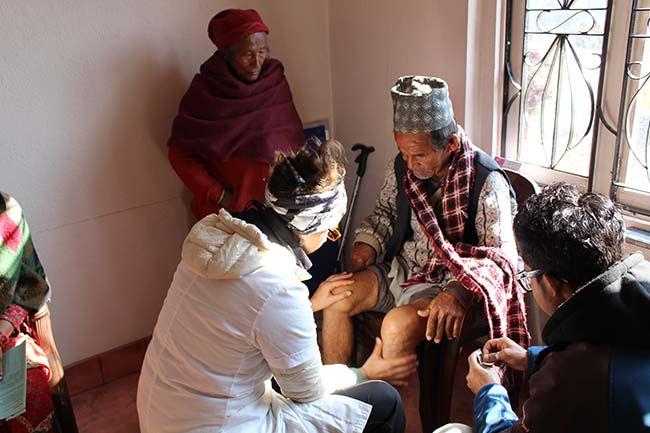
For me, it’s fascinating coming from a world where there are so many ‘cheap flights’ across the globe and for some people are as easy as getting a bus, yet these local villagers don't even have local transport set up for essential needs, what a paradox world we live in.
The majority of these patients are coming to see us for pain management of their knees and backs – and what with walking such distances to come for treatment seems a little counter productive sometimes. Unless of course this clinic is providing more then meets the eye, and they are coming for more reasons than the just pain in their knees, perhaps they are coming to simply be taken care of by someone, to be heard, to tell their story, which is undeniably a huge part of any healing process, and something of a revelation to most of the patients we see here. Most of these people have never spoken to anyone about their health complaints before, not even friends and family. Evidently complaining on any level is just not a part of their culture! I quote one of my patients - ‘Until I came here I thought I was the only one with knee pain, now I see almost everyone suffers from it!’
What a marvelous revelation to know she was not the only one who has this!!!
Cars are still a rarity here in the villages, its hard to fully grasp if its always like this or the fuel crisis for the past 5 months has transported life back in time100 years, when fossil fuels were just not a part of life. As we walk, we frequently come across men, women and children carrying the farm goods on their backs, in woven baskets with a strap around their head. It is no wonder that we see so many patients coming in for chronic pain management, degeneration of their knees and cervical compression giving widespread numbness and tingeing in their limbs.
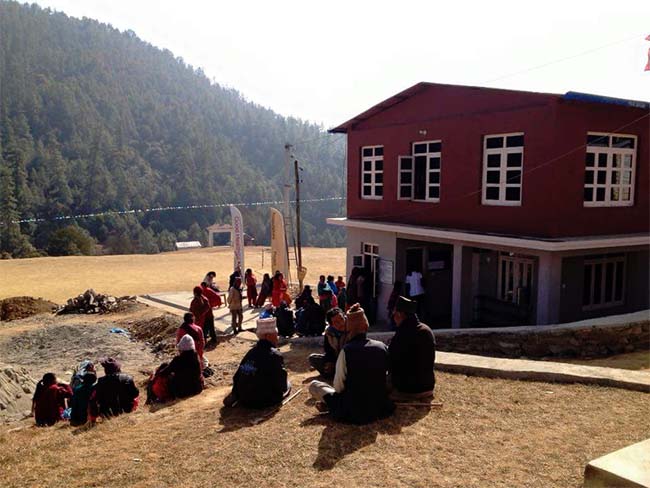
Nepal seems to live in an almost timeless space as well…(we often joke about things happening n Nepali time - meaning when it happens it happens!)
I do see the magic of not living by such regimented time…and simply being, something that we are al in search of in the western cultures, the simple art of being.
Yet these people are living like this in their daily live. We have a busy clinic of approximately 100+ patients each day. All booked in to either come in the morning or the afternoon, no set times as this wouldn't make sense to them. So they turn up and wait outside gathering together in community for perhaps hours before they get into see us. Yet they are so content waiting, chatting, being in the sun, simply BEING, no iphones to play on, no kindles, no newspapers, no phone calls to distract themselves or keep themselves entertained, they simply are, simply let themselves be, what else to do, Perhaps they have the art of conversation that has been lost in the modernised and technology-led modern world. Wow such profound teachings to share with us all.
Another thing by which the Nepalese people have inspired me is their adaptability. Since there is limited fuel they don't have the gas for cooking, yet this is not an issue for the people here in the villages.
After the earthquake in April 2015 most of the people in Nepal continued to live in the tents they built as shelter afterwards for some months, as either their homes were crumpled, or unsafe to live in, or they didn't feel safe being in them anymore with the continuing aftershocks. They got used to preparing wood fires again outside in the ground to cook their food. Now that the fuel crisis has limited the amount of gas that is available they are all continuing to use this ancient method of food preparation with ease.
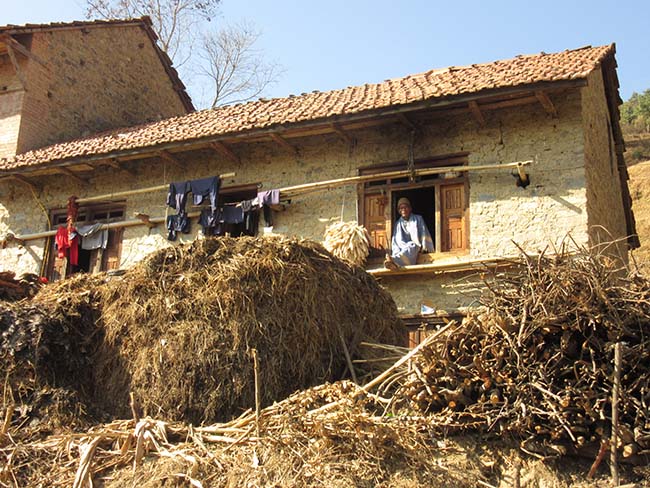
Our clinic is in the middle of a very rural farming town, where every house is like a little farm, with chickens, ducks, a couple of buffalo, some goats, drying corn hanging on the washing line next to the colourful clean laundry.
Inside the houses, the picture is very similar with the downstairs consisting of a room that is literally full of potatoes, winter vegetables and possibly their prized water buffalo.
Nepal is very cold in the winter, and it is felt here, as there is no heating, and no soothing hot water to thaw the bones out at the end of the day, conditions are very challenging to live in.
The local villagers essentially live in sheds, they wash in the streets using a community tap to wash their dishes, their babies, their clothes, and yet these people are the happiest people I have ever met. Always smiling, enjoying the simple pleasures of life of just taking such pleasure in greeting each other with such enthusiasm with putting their hands in prayer position and singing Namaste to each passer by.
Children run free in the fields, playing with each other, the goats and simply just being care-free children…. It’s evident that not having so much material possessions is also an incredible blessing to people. --- Zoe Nash
- Details
- By Sheri Barrows
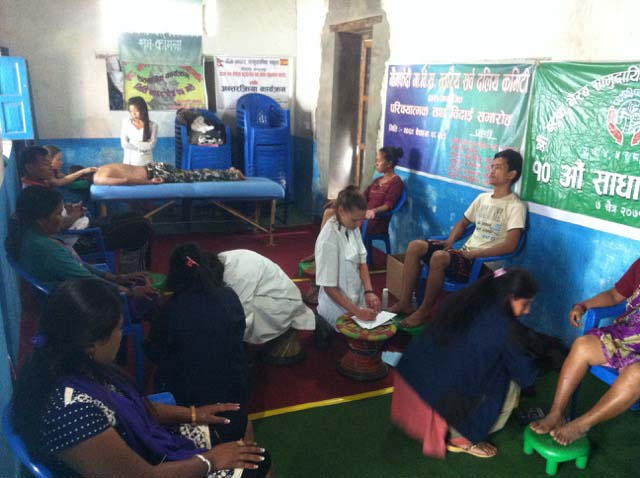
I have been filling the role of secretary/treasurer of Acupuncture Relief Project since 2008 when Andrew’s dream reached the point where it shifted from idea to action. When meetings with bankers and lawyers became necessary; when he needed my “type A” brain to figure out how to manage the mounds of information we were accumulating; and when the piles of legal documents needed to be filled out and filed – that’s where I came in. Since I am neither an acupuncturist nor a health care practitioner of any kind I have always felt a bit removed from the practice side of ARP. I handle the receipts for needles, otoscope’s, cotton balls, electro machines, foot stools, blankets, moxa and every other item used in the clinics and yet I have only heard second hand the stories about how the supplies have made a difference in the lives of the patients. Until now! This year I am extremely fortunate to have the opportunity to be here in Nepal for several months. To spend time in the clinics and to connect with the patients, practitioners and interpreters first hand.
Every day has been a learning experience and a gift but I am most affected and inspired every time one of our stroke patients comes to the clinic. Sure, I have watched the video on our web site of Birbahadur Thapa, showing his progress recovering from his stroke and I have heard the stories of other patients but it wasn’t until I actually witnessed the impact of acupuncture on a stroke patient for myself that I truly understood how important these clinics are.
Most of the stroke victims in Nepal are sent home from hospital with no physical therapy and no instructions on what they and their families can do to try to recover lost abilities, therefore they rarely experience any improvement after their stroke. Since a large number of our patients are illiterate, they also don’t really understand what happened to them and what “stroke” means so understandably this creates a lot of fear. When they come to our clinic they are often totally hopeless and demoralized because they have been in their condition for at least a year and often for many years. After just one or two treatments they experience noticeable changes and begin to feel hopeful. It is that shift to hopeful that moves me so deeply.
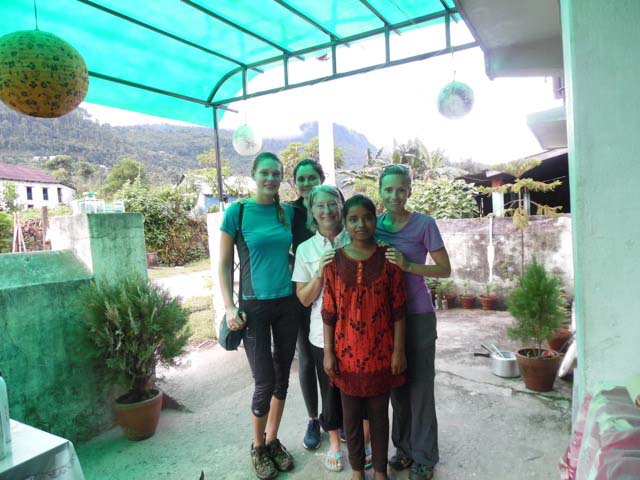
There is one man in particular that I have become very attached to. Jagat came to the Bhimphedi clinic for the first time with several family members because he needed their physical support to get to the clinic and, since he could not speak at all, he needed his wife to translate his facial expressions into words. I don’t believe I have ever seen a man as dejected as Jagat was on that first day. He is 35 years old with a wife and 3 kids and all of a sudden he cannot take care of his family nor support them financially. He no longer has a role in his community and people have stopped making eye contact with him – he has become invisible because he cannot participate in life and therefore he no longer matters.
His ARP doctor, Rachel Hemblade, went through multiple physical and vocal tests with him to determine what his abilities were, treated him with acupuncture and physical therapy, and then created a homework plan. Rachel recruited his family members to help him at least twice a day and taught them how to perform the physical therapy and voice coaching themselves. Jagat is very fortunate to have a caring family and everyone stepped up and said they would help.
The way Rachel fully and cheerfully engaged with Jagat and his family and her deeply compassionate manner had to have been reassuring for them on that first scary trip to the clinic.
On that initial visit, Jagat could not make any sound at all for two of the vowels and could barely sound the others. His entire right side was severely stroked. Hand in a claw like grip, shoulder barely mobile, unable to lift his arm up from his side, leg could move forward to walk at the hip only, foot had no motor control, face totally expressionless. Eyes immensely sad.
His home is a 4-hour walk from the clinic and thus would make daily treatment unreasonable so thankfully he was able to make arrangements to stay in Bhimphedi with friends.
When he came back to the clinic for his second treatment you could see an ever so slight sparkle in his eyes. For the first time since the stroke he had felt his body change and suddenly, he had hope!
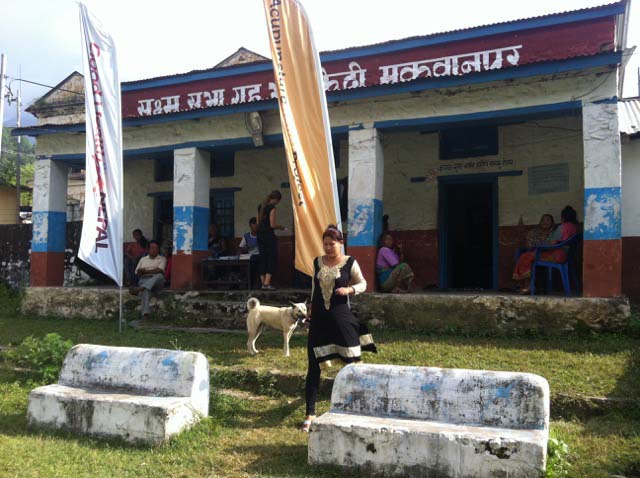
When he arrived for his third visit he was excited to show us that he could now pronounce all of his vowels. I will always remember that visit because it was also the first time he was able to smile and his smile lit up the whole room.
By his fifth treatment he no longer needed a family member to interpret his facial expressions because he could answer Rachel’s questions himself, albeit slowly, and each treatment since has continued to bring improvement.
The crooked smile he directs at me when I exclaim with joy at his progress is a gift I will never get tired of receiving.
This is but one example from the hundreds and hundreds of patients ARP practitioners treat every year. And this is why I will never again be able to file a receipt for needles or pay for an order of cotton balls or any of my other secretarial duties without being deeply touched by my experience here. I am immensely proud and appreciative of everyone who makes this project function on a daily basis – Tsering, all the interpreters and practitioners, all of the advisors – and I cannot begin to express my admiration for the dedication, love and energy Andrew has given to make this project happen, year after year. When I signed on as a board member 8 years ago, I never could have imagined the significance it would have in my life. --- Sheri Barrows
- Details
- By Stacey Kett
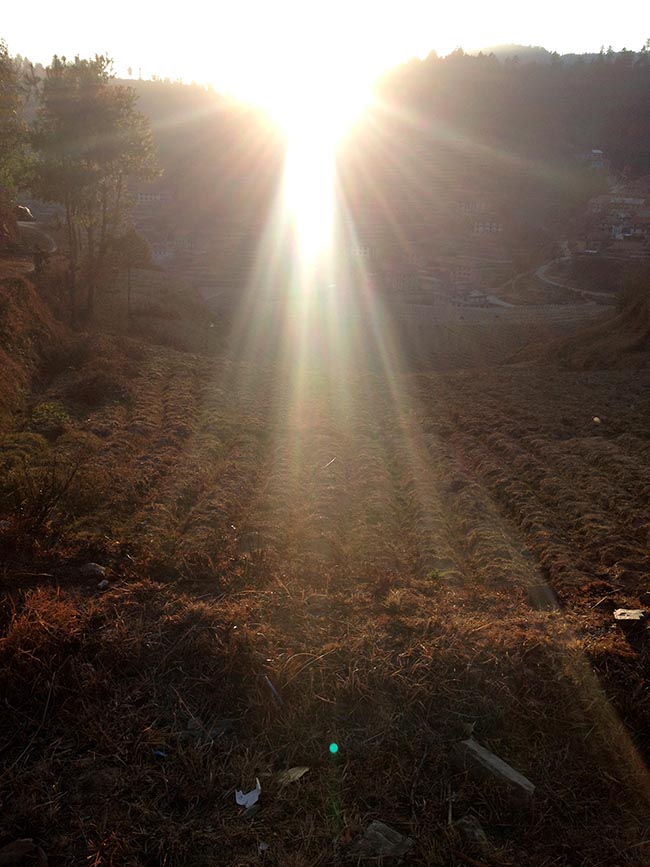
It’s the dry season here in Nepal. It has rained a few times since we arrived in the beginning of January, but just a little bit. The village of Bajra Barahi, that houses the Acupuncture Relief Project clinic, is a rural farming village. Most of the people that live here are subsistence farmers. Almost every inch of open land is terraced fields. My previous career, before becoming an Acupuncturist, was an organic farmer. I love seeing how people farm here in Nepal. In the late winter/ early spring they grow a lot of potatoes, cauliflower and mustard greens. In the summer, after the potatoes are harvested, they grow a lot of corn, rice, peppers and tomatoes.
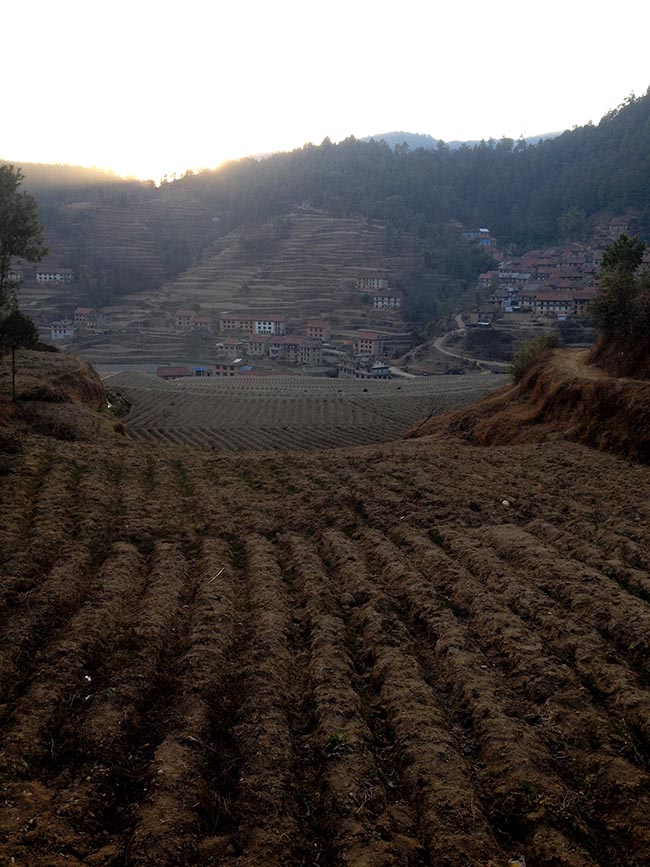
When we arrived here in January, the fields were flat and fallow. Then people started to work up the land, using oxen, rototiller-tractors and hand tools to form rows. They began to bring compost to the fields and dump them in piles spaced evenly around each field. Many people have livestock at their homes and are able to make their own compost mixed with pine needles and other foraged materials. People have their fields somewhat near their homes and transport the compost in baskets that are carried on their backs with a trump line across the top of their heads.
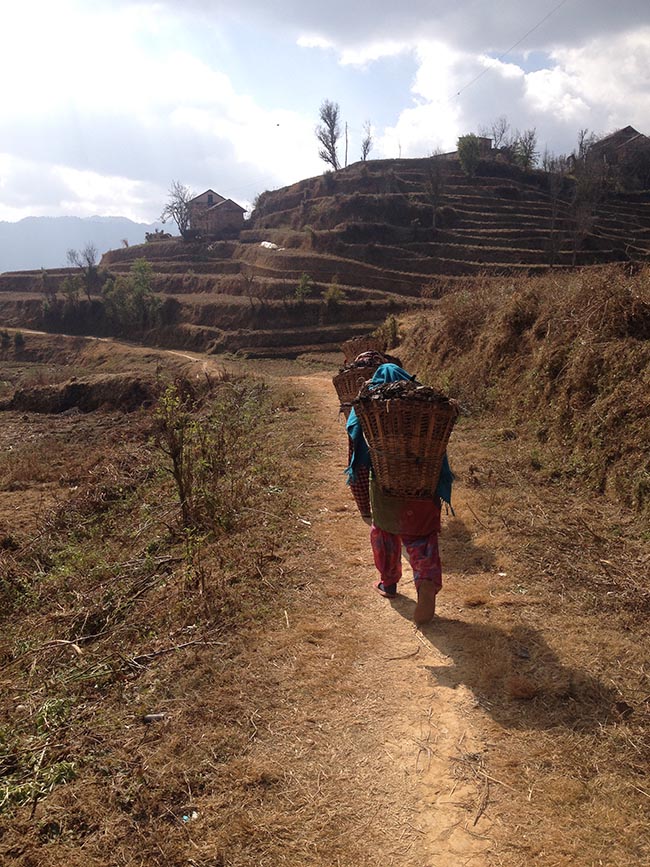
This is where the acupuncture clinic comes in. The life of a subsistence farmer is hard work. In the clinic we see a lot of aches and pains. We treat a lot of people whose neck is compressed, from carrying loads on their back and head, giving numbness and tingling down their arms and into their hands. We are able to treat the villagers for issues such as this. But the problem is that they have to continue to farm, carrying heavy loads to and from their fields. I think that they have a beautiful life. It’s better than sitting in front of a computer all day. Or at least that is my opinion. Our team of practitioners have had many conversations about what to do to help and we end up with no real answers. Farming is hard work, whether you carry a wheel barrel, shovel into a flatbed truck or carry loads on your back and head. But we can treat them with Acupuncture, discuss posture, exercises, help them manage their aches and pains and support their hard work.
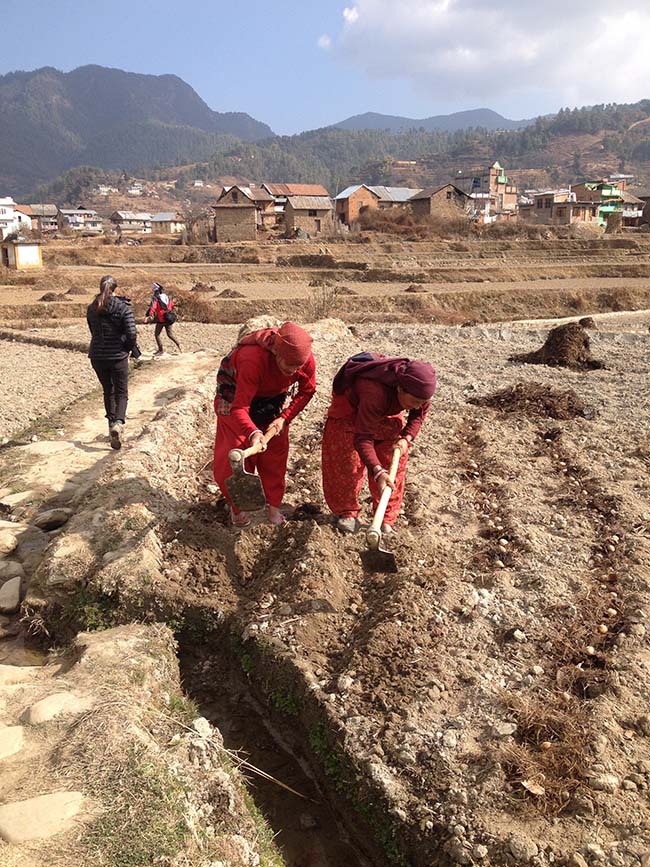
So after the compost is delivered to the fields, it is spread out by hand into the rows that were already created. The potatoes are placed in the rows on top of the compost and the soil is hilled up over the potatoes in beautiful rows. The entire family seems to participate in the farming. There is a job for everyone. We have seen little kids carrying baskets on their backs with light loads. The older people are sitting on a tarp in the field, cutting the potatoes, preparing them for planting. It was unexpected gift to get to see the potato planting in what seems to be so early in the year. It appears now, that most of the valley is planted in potatoes and we are waiting for them to sprout, waiting for green. --- Stacey Kett
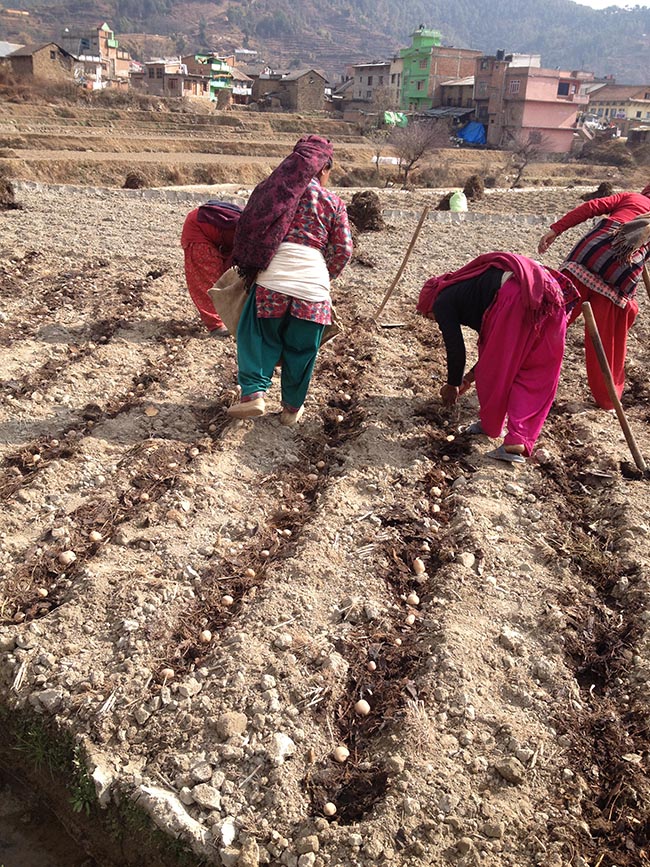
Our Mission
Acupuncture Relief Project, Inc. is a volunteer-based, 501(c)3 non-profit organization (Tax ID: 26-3335265). Our mission is to provide free medical support to those affected by poverty, conflict or disaster while offering an educationally meaningful experience to influence the professional development and personal growth of compassionate medical practitioners.
